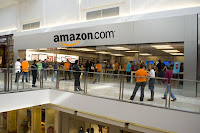
Have you ever been at a restaurant and noticed someone taking a photograph of their food? I have. In fact, having observed many instances of food photography I decided to discuss the topic with some friends and colleagues.
A great deal of work already exists on the complexity and underlying motivations of meals. In general the findings from studies on food and meal behavior have shown that, "although seemingly simple, [eating is] in fact very complex behavior in which many physiological and psychological factors interact."
So building on some of that existing research, here are a few fun theories about 'why people photograph their food.' If you have any additional ideas on the topic, I'd love to hear them.
Theory One: Social Ritual
Sharing and enjoying a meal is a part of social ritual. Historically, meals have often been used as a medium for passing on important cultural and religious rituals.
Perhaps people photograph their food together as part of a new social sharing ritual?
Theory Two: Collaborative Process
Preparing and enjoying a meal is a part of collaborative process. The process of contributing to a meal can be an important part of bringing together nutrition and emotion.
Perhaps people photograph their food to feel like they have contributed to the process?
Theory Three: Personal Pleasure Arousal
Anticipating and enjoying a meal enhances personal pleasure. The process of delaying gratification has been shown to increase the enjoyment associated with consumption of pleasurable products or services.
Perhaps people photograph their food as a form of pleasure arousal and gratification delay?
Theory Four: Experience Objectification
Eating and enjoying a meal is an ephemeral experience. Although the memories and emotions associated with eating can last a lifetime, the food itself does not.
Perhaps people photograph their food in an attempt to make the meal experience last?




